l Polyester (PE, Polyester )
PE coating for the material has good adhesion, acp sheet costs products will affect the colour and gloss of the choice of a large margin.
Polyester coating for UV resistance and coating film resistance to chalking, is not ideal, so the use of PE coating still need to be some restrictions, generally used in areas where air pollution is not serious or products that require multiple molding process.
l Fluorocarbon PVDF
Due to the chemical bond between PVDF and chemical bond, there is a very strong bond energy, so the coating has very good corrosion resistance and colour retention, in the building industry, aluminium composite panels coating, is among the highest grade products, and the molecular weight is large and straight bond.
l The high molecular weight and the straight bonding structure make the coating very resistant to chemicals, mechanical properties, UV and heat.
Under normal conditions, the corrosion resistance can last up to 20 years. In recent years, fluorinated resins containing trifluorochloroethylene and vinyl ester monomer copolymers have become prevalent in China, and are used in large numbers in building facades and metal panels.
Due to the use of easily hydrolysable vinyl ester monomer and fluorine content is about 30% lower than PVDF, therefore its weather resistance is compared with PVDF. The fluorocarbon coating for ACM produced by Baosteel has a coating PVDF content of not less than 70% (the others are propionic acid resins).

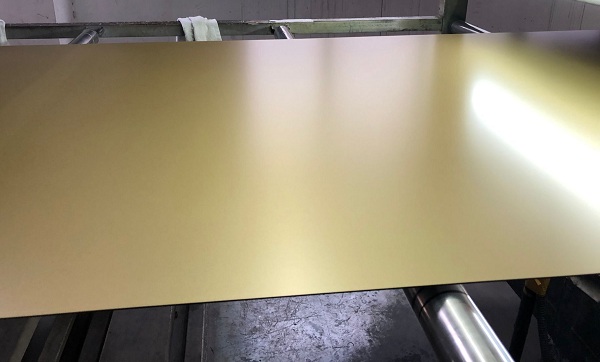
|
Resin type |
Hardness |
Bending |
Corrosion resistance |
Weatherability |
Cost |
Film thickness requirement/um |
|
PE |
excellent |
good |
good |
good |
excellent |
20 |
|
PVDF |
Good |
excellent |
excellent |
excellent |
Poor |
25 |
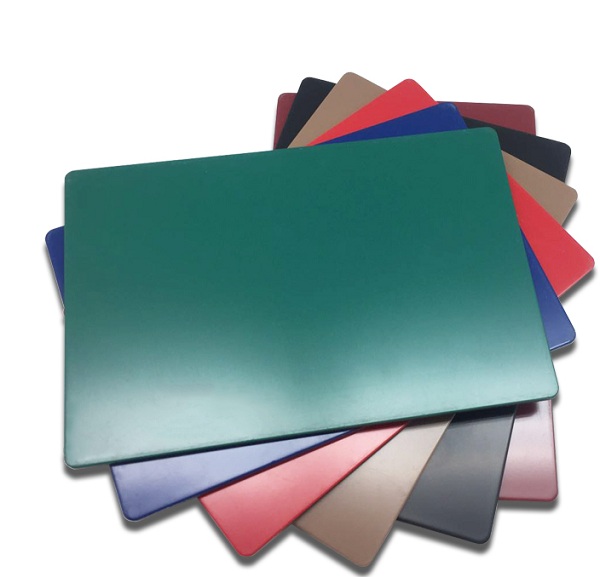
l There are two most important factors in the choice of primer for aluminum sheet acp sheet
One is the adhesion of the primer to the topcoat and substrate.
The second is that the primer provides most of the corrosion resistance of the coating.
From this point of view, epoxy resins are the obvious choice.
If flexibility and UV resistance are important, polyurethane primers are also an option.
For the backside coating, the most correct choice is to choose a two-layer structure for deracp aluminium composite panels.
A primer for the back and a topcoat for the back. The primer is of the same variety as the front and the top coat is a light coloured (e.g. white) polyester.
The level of gloss is not an indicator of the performance of the coating and, like colour, it is only a characterisation. In fact, paints (coatings) are relatively easy to achieve with high gloss.
However, the high gloss surface harsh daytime on the high reflectivity of the sun will cause light pollution (many now do not use glass curtain wall is because of light pollution), in addition, the
High gloss surface friction coefficient is small, easy to slip, in the roof construction, easy to bring safety hazards; aluminium composite panel in the outdoor use of the aging of the first said is the loss of light, if the need for repair, the old and new board is very easy to distinguish between, resulting in poor appearance;
If the backing paint is high gloss, it is easy to produce a halo when there is light indoors and cause visual fatigue. For this reason, under normal circumstances, aluminium composite panels for building use have a low to medium gloss level (30-40 degrees).
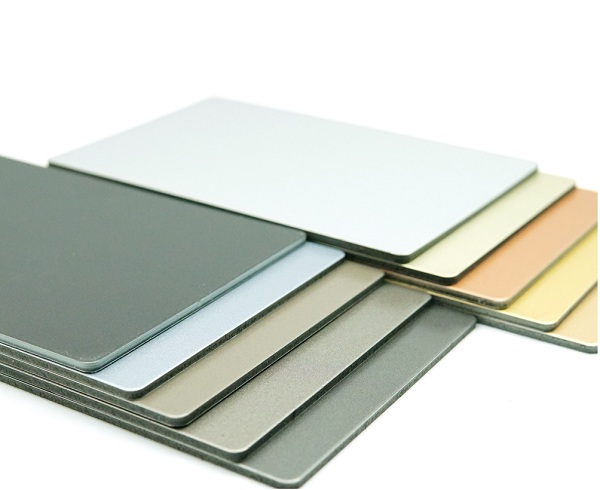
l Selection of coating thickness
Microscopically speaking, the coating is a hollow organisation. Water in the air, corrosive media (chloride ions, etc.) can invade through the weak parts of the coating, causing sub-membrane corrosion and consequently blistering and peeling of the coating.
In addition, the secondary coating is denser than the primary coating, even if the coating thickness is the same. According to foreign reports and relevant corrosion test results, the frontal coating of 20μm or more to effectively prevent the intrusion of corrosive media.
Due to the different corrosion prevention mechanisms of the primer and top coat, not only should the total film thickness be specified, but also the thickness of the primer ("5μm) and top coat ("15μm) respectively, only in this way can we ensure that the corrosion resistance of different parts of the aluminium composite panel is balanced.
PVDF products require a thicker coating film. This is because of the need to provide a longer service life guarantee. The requirements for the back coat depend on the application, while aluminium composite panels acm also require two coats due to the corrosive indoor environment. The thickness should be at least 10μm.
l Choice of coating colour (emphasis added!)
The choice of colour is mainly a matter of matching the surroundings and the owner's preference, but from a technical point of view there is a wide choice of pigments for light coloured paints.
Inorganic paints with superior durability (e.g. titanium dioxide, etc.) can be chosen, and the high heat reflectivity of the paint (double the reflectivity of darker paints) and the relatively low temperature of the coating itself during the summer months are beneficial to the longevity of the coating.
In addition, even if the coating is discoloured or chalked, the contrast between the light-coloured coating film and the original colour after the change is small and has little effect on the appearance.
The dark colours (especially the brighter ones) are mostly organic and fade easily when exposed to UV light, with the shortest being 3 months.
According to relevant test data, in the summer when the external temperature is at its highest at midday, white surfaces are 10 degrees cooler than blue surfaces and 19 degrees cooler than black surfaces.
The ability of different colours to reflect sunlight is different. The following table shows the reflectivity of different colours.
Colour inversion ratio inversion effect
|
Color |
Reflectivity(%) |
Reflectance effect (%) |
|
White |
84 |
Excellent |
|
cream |
74 |
Better |
|
Light red |
69.4 |
better |
|
Beige |
64.3 |
better |
|
Light green |
54.1 |
better |
|
Light blue |
45.5 |
Medium |
|
Brown |
23.6 |
Bad |
|
Black |
2.9 |
worse |
In the case of aluminium composite board panel, the thermal expansion rate of the coating and the panel are usually different, especially the coefficient of linear expansion of the metal substrate and the organic coating is different.
When the ambient temperature changes, the substrate and the coating combined with the interface will occur expansion or contraction stress, if not properly released will occur the coating cracking.
Baosteel has done the same paint variety in Hainan, the same paint supplier, different colours of 8 years exposure test, the results also confirmed the light colour paint discolouration small. The following table shows the comparison of different colour exposure tests.
Glossy colour difference original thickness present thickness for acp sheets
|
Colors |
Original gloss |
Current gloss |
Chromatic aberration |
Original thickness |
Current thickness |
Chalking |
|
white |
35% |
3% |
1.49 |
24 |
20 |
Level 2 |
|
Red |
45% |
3% |
2.48 |
24 |
20 |
Level 2 |
|
Light yellow |
26% |
2% |
1.26 |
24 |
17 |
Level 2 |
|
green |
41% |
2% |
3.43 |
24 |
17 |
Level 2 |
|
blue |
41% |
2% |
4.95 |
24 |
17 |
Level 2 |
l In addition, two misconceptions about the current selection on the market should be explained here.
One, is that there is currently a large number of white primers.
The purpose of using white primer is that the thickness of the top coat can be reduced, because the normal corrosion resistant primer for construction is yellow-green (hence the strontium chromate pigment) and there must be sufficient thickness of top coat to have a good covering power.
This is dangerous for corrosion resistance, firstly the primer is poorly resistant to corrosion and then the topcoat is considerably thinner, less than 10 microns.
Such aluminium composite panels look shiny, in less than two years will produce corrosion in different places (incision, bending processing place, under the film, etc.).
Secondly, it is the same project with aluminium composite panel cladding sheet for construction projects using different manufacturers and different batches of aluminium composite panels, which appear to be the same colour in construction, but after several years of sunlight exposure, different coatings of different manufacturers have different colour change trends, resulting in serious colour differences. Even for products from the same supplier, it is strongly recommended to order at once for the same project.
This is because it is possible for different batches to use products from different paint suppliers, increasing the likelihood of colour differences arising.
Proper selection of materials will not only improve the life of the building, but also reduce costs and thus be truly environmentally friendly and resource efficient.
l You may also want to know about aluminum composite materials
|
Coating |
PE / PVDF/ FEVE/ NANO |
|
Core |
LDPE/Fireproof |
|
Length |
Customized |
|
Color |
Solid / Metallic / Marble / Wooden / Brush / Glossy/ Mirror, custom |
|
MOQ |
600 SQM each size per color |
|
Brand / OEM |
DERACP or Customized |
|
Delivery |
15 day after deposit received and color confirmed |
|
Payment Terms |
T/T / L/C / Western Union / Paypal |
|
Packing |
Wooden Package or bulk loading |
l About DERACP
DERACP found in 2000 ,we are specialized in manufacturing building materials, such as Aluminum Corrugated Composite Panel (ACCP) , Aluminum Composite Panel (ACP) ,Color coated Aluminum Coil etc.The factory located in Wenzhou, Zhejiang Province, China, all transportation options are convenience to the factory.It's easy to get to the airport and port. Our factory covers an area of 15,000 square meters , the warehouse covers an area of 5000 square meters and has six production lines. We have the best aluminum leather suppliers and adhesive suppliers .
We currently have over 300 employees including 8 engineers, all of them are participate in the composite materials development more than 10 years . Our factory is ISO9001:2008 certified in quality management systems, ISO14001 :2004 certified in environmental management systems and SAS 18001 certified for Occupational Health and Safety and BSCI(Business Social Compliance Initiative) certified. Our products also have passed SGS, CE(attestation of European Union), and CTC(China Building Material Certification).
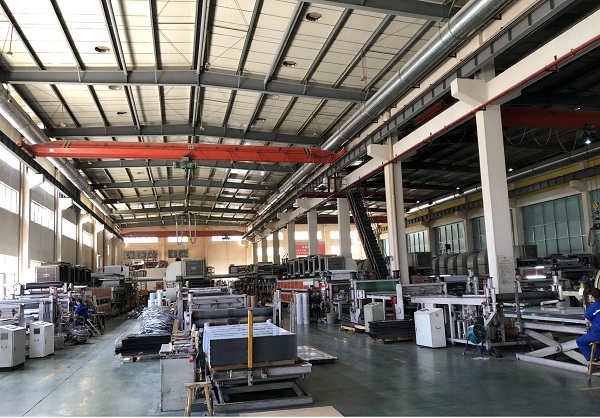

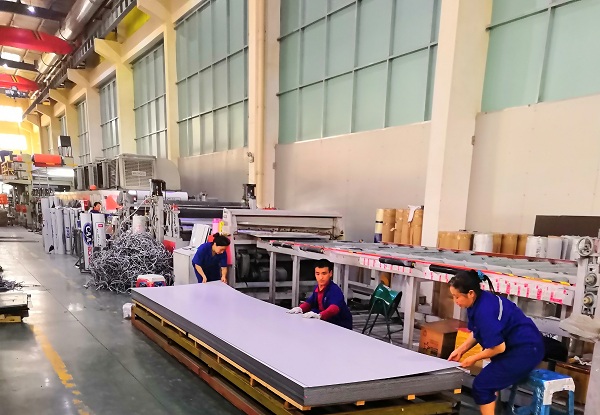
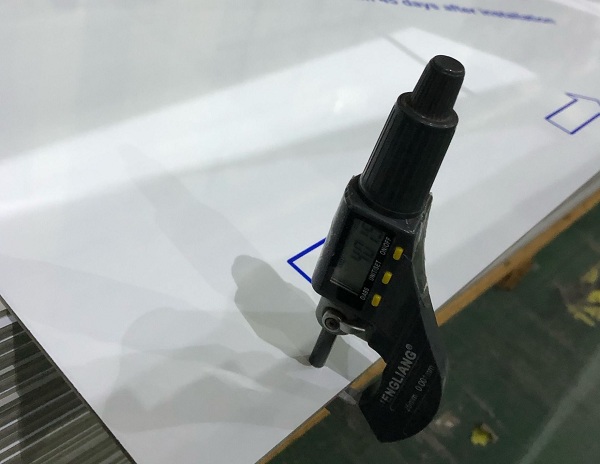
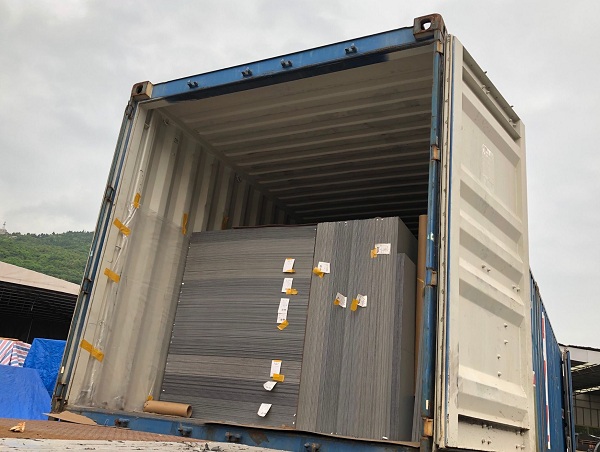

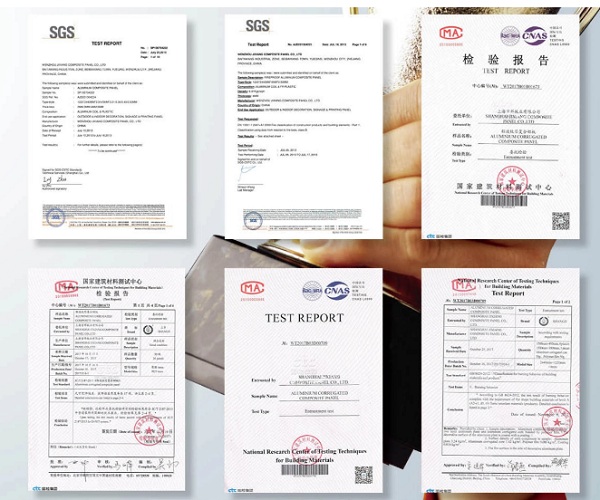
If you have any questions, contact me, please.
Contact: Kerry zhu
Whatsapp & WeChat : +86 130 4067 0248
Email : kerry@der-acp.com
You'll get my response within 24 hours.

l Selection of coating thickness
Microscopically speaking, the coating is a hollow organisation. Water in the air, corrosive media (chloride ions, etc.) can invade through the weak parts of the coating, causing sub-membrane corrosion and consequently blistering and peeling of the coating.
In addition, the secondary coating is denser than the primary coating, even if the coating thickness is the same. According to foreign reports and relevant corrosion test results, the frontal coating of 20μm or more to effectively prevent the intrusion of corrosive media.
Due to the different corrosion prevention mechanisms of the primer and top coat, not only should the total film thickness be specified, but also the thickness of the primer ("5μm) and top coat ("15μm) respectively, only in this way can we ensure that the corrosion resistance of different parts of the aluminium composite panel is balanced.
PVDF products require a thicker coating film. This is because of the need to provide a longer service life guarantee. The requirements for the back coat depend on the application, while aluminium composite panels acm also require two coats due to the corrosive indoor environment. The thickness should be at least 10μm.
l Choice of coating colour (emphasis added!)
The choice of colour is mainly a matter of matching the surroundings and the owner's preference, but from a technical point of view there is a wide choice of pigments for light coloured paints.
Inorganic paints with superior durability (e.g. titanium dioxide, etc.) can be chosen, and the high heat reflectivity of the paint (double the reflectivity of darker paints) and the relatively low temperature of the coating itself during the summer months are beneficial to the longevity of the coating.
In addition, even if the coating is discoloured or chalked, the contrast between the light-coloured coating film and the original colour after the change is small and has little effect on the appearance.
The dark colours (especially the brighter ones) are mostly organic and fade easily when exposed to UV light, with the shortest being 3 months.
According to relevant test data, in the summer when the external temperature is at its highest at midday, white surfaces are 10 degrees cooler than blue surfaces and 19 degrees cooler than black surfaces.
The ability of different colours to reflect sunlight is different. The following table shows the reflectivity of different colours.
Colour inversion ratio inversion effect
|
Color |
Reflectivity(%) |
Reflectance effect (%) |
|
White |
84 |
Excellent |
|
cream |
74 |
Better |
|
Light red |
69.4 |
better |
|
Beige |
64.3 |
better |
|
Light green |
54.1 |
better |
|
Light blue |
45.5 |
Medium |
|
Brown |
23.6 |
Bad |
|
Black |
2.9 |
worse |
In the case of aluminium composite board panel, the thermal expansion rate of the coating and the panel are usually different, especially the coefficient of linear expansion of the metal substrate and the organic coating is different.
When the ambient temperature changes, the substrate and the coating combined with the interface will occur expansion or contraction stress, if not properly released will occur the coating cracking.
Baosteel has done the same paint variety in Hainan, the same paint supplier, different colours of 8 years exposure test, the results also confirmed the light colour paint discolouration small. The following table shows the comparison of different colour exposure tests.
Glossy colour difference original thickness present thickness for acp sheets
|
Colors |
Original gloss |
Current gloss |
Chromatic aberration |
Original thickness |
Current thickness |
Chalking |
|
white |
35% |
3% |
1.49 |
24 |
20 |
Level 2 |
|
Red |
45% |
3% |
2.48 |
24 |
20 |
Level 2 |
|
Light yellow |
26% |
2% |
1.26 |
24 |
17 |
Level 2 |
|
green |
41% |
2% |
3.43 |
24 |
17 |
Level 2 |
|
blue |
41% |
2% |
4.95 |
24 |
17 |
Level 2 |
l In addition, two misconceptions about the current selection on the market should be explained here.
One, is that there is currently a large number of white primers.
The purpose of using white primer is that the thickness of the top coat can be reduced, because the normal corrosion resistant primer for construction is yellow-green (hence the strontium chromate pigment) and there must be sufficient thickness of top coat to have a good covering power.
This is dangerous for corrosion resistance, firstly the primer is poorly resistant to corrosion and then the topcoat is considerably thinner, less than 10 microns.
Such aluminium composite panels look shiny, in less than two years will produce corrosion in different places (incision, bending processing place, under the film, etc.).
Secondly, it is the same project with aluminium composite panel cladding sheet for construction projects using different manufacturers and different batches of aluminium composite panels, which appear to be the same colour in construction, but after several years of sunlight exposure, different coatings of different manufacturers have different colour change trends, resulting in serious colour differences. Even for products from the same supplier, it is strongly recommended to order at once for the same project.
This is because it is possible for different batches to use products from different paint suppliers, increasing the likelihood of colour differences arising.
Proper selection of materials will not only improve the life of the building, but also reduce costs and thus be truly environmentally friendly and resource efficient.
l You may also want to know about aluminum composite materials
|
Coating |
PE / PVDF/ FEVE/ NANO |
|
Core |
LDPE/Fireproof |
|
Length |
Customized |
|
Color |
Solid / Metallic / Marble / Wooden / Brush / Glossy/ Mirror, custom |
|
MOQ |
600 SQM each size per color |
|
Brand / OEM |
DERACP or Customized |
|
Delivery |
15 day after deposit received and color confirmed |
|
Payment Terms |
T/T / L/C / Western Union / Paypal |
|
Packing |
Wooden Package or bulk loading |
l About DERACP
DERACP found in 2000 ,we are specialized in manufacturing building materials, such as Aluminum Corrugated Composite Panel (ACCP) , Aluminum Composite Panel (ACP) ,Color coated Aluminum Coil etc.The factory located in Wenzhou, Zhejiang Province, China, all transportation options are convenience to the factory.It's easy to get to the airport and port. Our factory covers an area of 15,000 square meters , the warehouse covers an area of 5000 square meters and has six production lines. We have the best aluminum leather suppliers and adhesive suppliers .
We currently have over 300 employees including 8 engineers, all of them are participate in the composite materials development more than 10 years . Our factory is ISO9001:2008 certified in quality management systems, ISO14001 :2004 certified in environmental management systems and SAS 18001 certified for Occupational Health and Safety and BSCI(Business Social Compliance Initiative) certified. Our products also have passed SGS, CE(attestation of European Union), and CTC(China Building Material Certification).






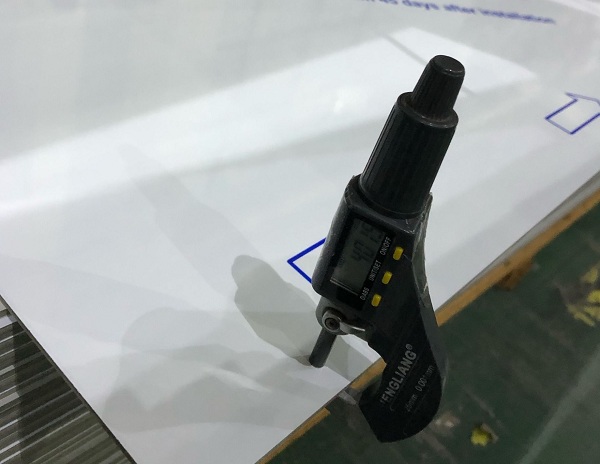

If you have any questions, contact me, please.
Contact: Kerry zhu
Whatsapp & WeChat : +86 130 4067 0248
Email : kerry@der-acp.com
You'll get my response within 24 hours.

l Selection of coating thickness
Microscopically speaking, the coating is a hollow organisation. Water in the air, corrosive media (chloride ions, etc.) can invade through the weak parts of the coating, causing sub-membrane corrosion and consequently blistering and peeling of the coating.
In addition, the secondary coating is denser than the primary coating, even if the coating thickness is the same. According to foreign reports and relevant corrosion test results, the frontal coating of 20μm or more to effectively prevent the intrusion of corrosive media.
Due to the different corrosion prevention mechanisms of the primer and top coat, not only should the total film thickness be specified, but also the thickness of the primer ("5μm) and top coat ("15μm) respectively, only in this way can we ensure that the corrosion resistance of different parts of the aluminium composite panel is balanced.
PVDF products require a thicker coating film. This is because of the need to provide a longer service life guarantee. The requirements for the back coat depend on the application, while aluminium composite panels acm also require two coats due to the corrosive indoor environment. The thickness should be at least 10μm.
l Choice of coating colour (emphasis added!)
The choice of colour is mainly a matter of matching the surroundings and the owner's preference, but from a technical point of view there is a wide choice of pigments for light coloured paints.
Inorganic paints with superior durability (e.g. titanium dioxide, etc.) can be chosen, and the high heat reflectivity of the paint (double the reflectivity of darker paints) and the relatively low temperature of the coating itself during the summer months are beneficial to the longevity of the coating.
In addition, even if the coating is discoloured or chalked, the contrast between the light-coloured coating film and the original colour after the change is small and has little effect on the appearance.
The dark colours (especially the brighter ones) are mostly organic and fade easily when exposed to UV light, with the shortest being 3 months.
According to relevant test data, in the summer when the external temperature is at its highest at midday, white surfaces are 10 degrees cooler than blue surfaces and 19 degrees cooler than black surfaces.
The ability of different colours to reflect sunlight is different. The following table shows the reflectivity of different colours.
Colour inversion ratio inversion effect
|
Color |
Reflectivity(%) |
Reflectance effect (%) |
|
White |
84 |
Excellent |
|
cream |
74 |
Better |
|
Light red |
69.4 |
better |
|
Beige |
64.3 |
better |
|
Light green |
54.1 |
better |
|
Light blue |
45.5 |
Medium |
|
Brown |
23.6 |
Bad |
|
Black |
2.9 |
worse |
In the case of aluminium composite board panel, the thermal expansion rate of the coating and the panel are usually different, especially the coefficient of linear expansion of the metal substrate and the organic coating is different.
When the ambient temperature changes, the substrate and the coating combined with the interface will occur expansion or contraction stress, if not properly released will occur the coating cracking.
Baosteel has done the same paint variety in Hainan, the same paint supplier, different colours of 8 years exposure test, the results also confirmed the light colour paint discolouration small. The following table shows the comparison of different colour exposure tests.
Glossy colour difference original thickness present thickness for acp sheets
|
Colors |
Original gloss |
Current gloss |
Chromatic aberration |
Original thickness |
Current thickness |
Chalking |
|
white |
35% |
3% |
1.49 |
24 |
20 |
Level 2 |
|
Red |
45% |
3% |
2.48 |
24 |
20 |
Level 2 |
|
Light yellow |
26% |
2% |
1.26 |
24 |
17 |
Level 2 |
|
green |
41% |
2% |
3.43 |
24 |
17 |
Level 2 |
|
blue |
41% |
2% |
4.95 |
24 |
17 |
Level 2 |
l In addition, two misconceptions about the current selection on the market should be explained here.
One, is that there is currently a large number of white primers.
The purpose of using white primer is that the thickness of the top coat can be reduced, because the normal corrosion resistant primer for construction is yellow-green (hence the strontium chromate pigment) and there must be sufficient thickness of top coat to have a good covering power.
This is dangerous for corrosion resistance, firstly the primer is poorly resistant to corrosion and then the topcoat is considerably thinner, less than 10 microns.
Such aluminium composite panels look shiny, in less than two years will produce corrosion in different places (incision, bending processing place, under the film, etc.).
Secondly, it is the same project with aluminium composite panel cladding sheet for construction projects using different manufacturers and different batches of aluminium composite panels, which appear to be the same colour in construction, but after several years of sunlight exposure, different coatings of different manufacturers have different colour change trends, resulting in serious colour differences. Even for products from the same supplier, it is strongly recommended to order at once for the same project.
This is because it is possible for different batches to use products from different paint suppliers, increasing the likelihood of colour differences arising.
Proper selection of materials will not only improve the life of the building, but also reduce costs and thus be truly environmentally friendly and resource efficient.
l You may also want to know about aluminum composite materials
|
Coating |
PE / PVDF/ FEVE/ NANO |
|
Core |
LDPE/Fireproof |
|
Length |
Customized |
|
Color |
Solid / Metallic / Marble / Wooden / Brush / Glossy/ Mirror, custom |
|
MOQ |
600 SQM each size per color |
|
Brand / OEM |
DERACP or Customized |
|
Delivery |
15 day after deposit received and color confirmed |
|
Payment Terms |
T/T / L/C / Western Union / Paypal |
|
Packing |
Wooden Package or bulk loading |
l About DERACP
DERACP found in 2000 ,we are specialized in manufacturing building materials, such as Aluminum Corrugated Composite Panel (ACCP) , Aluminum Composite Panel (ACP) ,Color coated Aluminum Coil etc.The factory located in Wenzhou, Zhejiang Province, China, all transportation options are convenience to the factory.It's easy to get to the airport and port. Our factory covers an area of 15,000 square meters , the warehouse covers an area of 5000 square meters and has six production lines. We have the best aluminum leather suppliers and adhesive suppliers .
We currently have over 300 employees including 8 engineers, all of them are participate in the composite materials development more than 10 years . Our factory is ISO9001:2008 certified in quality management systems, ISO14001 :2004 certified in environmental management systems and SAS 18001 certified for Occupational Health and Safety and BSCI(Business Social Compliance Initiative) certified. Our products also have passed SGS, CE(attestation of European Union), and CTC(China Building Material Certification).







If you have any questions, contact me, please.
Contact: Kerry zhu
Whatsapp & WeChat : +86 130 4067 0248
Email : kerry@der-acp.com
You'll get my response within 24 hours.

l Selection of coating thickness
Microscopically speaking, the coating is a hollow organisation. Water in the air, corrosive media (chloride ions, etc.) can invade through the weak parts of the coating, causing sub-membrane corrosion and consequently blistering and peeling of the coating.
In addition, the secondary coating is denser than the primary coating, even if the coating thickness is the same. According to foreign reports and relevant corrosion test results, the frontal coating of 20μm or more to effectively prevent the intrusion of corrosive media.
Due to the different corrosion prevention mechanisms of the primer and top coat, not only should the total film thickness be specified, but also the thickness of the primer ("5μm) and top coat ("15μm) respectively, only in this way can we ensure that the corrosion resistance of different parts of the aluminium composite panel is balanced.
PVDF products require a thicker coating film. This is because of the need to provide a longer service life guarantee. The requirements for the back coat depend on the application, while aluminium composite panels acm also require two coats due to the corrosive indoor environment. The thickness should be at least 10μm.
l Choice of coating colour (emphasis added!)
The choice of colour is mainly a matter of matching the surroundings and the owner's preference, but from a technical point of view there is a wide choice of pigments for light coloured paints.
Inorganic paints with superior durability (e.g. titanium dioxide, etc.) can be chosen, and the high heat reflectivity of the paint (double the reflectivity of darker paints) and the relatively low temperature of the coating itself during the summer months are beneficial to the longevity of the coating.
In addition, even if the coating is discoloured or chalked, the contrast between the light-coloured coating film and the original colour after the change is small and has little effect on the appearance.
The dark colours (especially the brighter ones) are mostly organic and fade easily when exposed to UV light, with the shortest being 3 months.
According to relevant test data, in the summer when the external temperature is at its highest at midday, white surfaces are 10 degrees cooler than blue surfaces and 19 degrees cooler than black surfaces.
The ability of different colours to reflect sunlight is different. The following table shows the reflectivity of different colours.
Colour inversion ratio inversion effect
|
Color |
Reflectivity(%) |
Reflectance effect (%) |
|
White |
84 |
Excellent |
|
cream |
74 |
Better |
|
Light red |
69.4 |
better |
|
Beige |
64.3 |
better |
|
Light green |
54.1 |
better |
|
Light blue |
45.5 |
Medium |
|
Brown |
23.6 |
Bad |
|
Black |
2.9 |
worse |
In the case of aluminium composite board panel, the thermal expansion rate of the coating and the panel are usually different, especially the coefficient of linear expansion of the metal substrate and the organic coating is different.
When the ambient temperature changes, the substrate and the coating combined with the interface will occur expansion or contraction stress, if not properly released will occur the coating cracking.
Baosteel has done the same paint variety in Hainan, the same paint supplier, different colours of 8 years exposure test, the results also confirmed the light colour paint discolouration small. The following table shows the comparison of different colour exposure tests.
Glossy colour difference original thickness present thickness for acp sheets
|
Colors |
Original gloss |
Current gloss |
Chromatic aberration |
Original thickness |
Current thickness |
Chalking |
|
white |
35% |
3% |
1.49 |
24 |
20 |
Level 2 |
|
Red |
45% |
3% |
2.48 |
24 |
20 |
Level 2 |
|
Light yellow |
26% |
2% |
1.26 |
24 |
17 |
Level 2 |
|
green |
41% |
2% |
3.43 |
24 |
17 |
Level 2 |
|
blue |
41% |
2% |
4.95 |
24 |
17 |
Level 2 |
l In addition, two misconceptions about the current selection on the market should be explained here.
One, is that there is currently a large number of white primers.
The purpose of using white primer is that the thickness of the top coat can be reduced, because the normal corrosion resistant primer for construction is yellow-green (hence the strontium chromate pigment) and there must be sufficient thickness of top coat to have a good covering power.
This is dangerous for corrosion resistance, firstly the primer is poorly resistant to corrosion and then the topcoat is considerably thinner, less than 10 microns.
Such aluminium composite panels look shiny, in less than two years will produce corrosion in different places (incision, bending processing place, under the film, etc.).
Secondly, it is the same project with aluminium composite panel cladding sheet for construction projects using different manufacturers and different batches of aluminium composite panels, which appear to be the same colour in construction, but after several years of sunlight exposure, different coatings of different manufacturers have different colour change trends, resulting in serious colour differences. Even for products from the same supplier, it is strongly recommended to order at once for the same project.
This is because it is possible for different batches to use products from different paint suppliers, increasing the likelihood of colour differences arising.
Proper selection of materials will not only improve the life of the building, but also reduce costs and thus be truly environmentally friendly and resource efficient.
l You may also want to know about aluminum composite materials
|
Coating |
PE / PVDF/ FEVE/ NANO |
|
Core |
LDPE/Fireproof |
|
Length |
Customized |
|
Color |
Solid / Metallic / Marble / Wooden / Brush / Glossy/ Mirror, custom |
|
MOQ |
600 SQM each size per color |
|
Brand / OEM |
DERACP or Customized |
|
Delivery |
15 day after deposit received and color confirmed |
|
Payment Terms |
T/T / L/C / Western Union / Paypal |
|
Packing |
Wooden Package or bulk loading |
l About DERACP
DERACP found in 2000 ,we are specialized in manufacturing building materials, such as Aluminum Corrugated Composite Panel (ACCP) , Aluminum Composite Panel (ACP) ,Color coated Aluminum Coil etc.The factory located in Wenzhou, Zhejiang Province, China, all transportation options are convenience to the factory.It's easy to get to the airport and port. Our factory covers an area of 15,000 square meters , the warehouse covers an area of 5000 square meters and has six production lines. We have the best aluminum leather suppliers and adhesive suppliers .
We currently have over 300 employees including 8 engineers, all of them are participate in the composite materials development more than 10 years . Our factory is ISO9001:2008 certified in quality management systems, ISO14001 :2004 certified in environmental management systems and SAS 18001 certified for Occupational Health and Safety and BSCI(Business Social Compliance Initiative) certified. Our products also have passed SGS, CE(attestation of European Union), and CTC(China Building Material Certification).








If you have any questions, contact me, please.
Contact: Kerry zhu
Whatsapp & WeChat : +86 130 4067 0248
Email : kerry@der-acp.com
You'll get my response within 24 hours.

l Selection of coating thickness
Microscopically speaking, the coating is a hollow organisation. Water in the air, corrosive media (chloride ions, etc.) can invade through the weak parts of the coating, causing sub-membrane corrosion and consequently blistering and peeling of the coating.
In addition, the secondary coating is denser than the primary coating, even if the coating thickness is the same. According to foreign reports and relevant corrosion test results, the frontal coating of 20μm or more to effectively prevent the intrusion of corrosive media.
Due to the different corrosion prevention mechanisms of the primer and top coat, not only should the total film thickness be specified, but also the thickness of the primer ("5μm) and top coat ("15μm) respectively, only in this way can we ensure that the corrosion resistance of different parts of the aluminium composite panel is balanced.
PVDF products require a thicker coating film. This is because of the need to provide a longer service life guarantee. The requirements for the back coat depend on the application, while aluminium composite panels acm also require two coats due to the corrosive indoor environment. The thickness should be at least 10μm.
l Choice of coating colour (emphasis added!)
The choice of colour is mainly a matter of matching the surroundings and the owner's preference, but from a technical point of view there is a wide choice of pigments for light coloured paints.
Inorganic paints with superior durability (e.g. titanium dioxide, etc.) can be chosen, and the high heat reflectivity of the paint (double the reflectivity of darker paints) and the relatively low temperature of the coating itself during the summer months are beneficial to the longevity of the coating.
In addition, even if the coating is discoloured or chalked, the contrast between the light-coloured coating film and the original colour after the change is small and has little effect on the appearance.
The dark colours (especially the brighter ones) are mostly organic and fade easily when exposed to UV light, with the shortest being 3 months.
According to relevant test data, in the summer when the external temperature is at its highest at midday, white surfaces are 10 degrees cooler than blue surfaces and 19 degrees cooler than black surfaces.
The ability of different colours to reflect sunlight is different. The following table shows the reflectivity of different colours.
Colour inversion ratio inversion effect
|
Color |
Reflectivity(%) |
Reflectance effect (%) |
|
White |
84 |
Excellent |
|
cream |
74 |
Better |
|
Light red |
69.4 |
better |
|
Beige |
64.3 |
better |
|
Light green |
54.1 |
better |
|
Light blue |
45.5 |
Medium |
|
Brown |
23.6 |
Bad |
|
Black |
2.9 |
worse |
In the case of aluminium composite board panel, the thermal expansion rate of the coating and the panel are usually different, especially the coefficient of linear expansion of the metal substrate and the organic coating is different.
When the ambient temperature changes, the substrate and the coating combined with the interface will occur expansion or contraction stress, if not properly released will occur the coating cracking.
Baosteel has done the same paint variety in Hainan, the same paint supplier, different colours of 8 years exposure test, the results also confirmed the light colour paint discolouration small. The following table shows the comparison of different colour exposure tests.
Glossy colour difference original thickness present thickness for acp sheets
|
Colors |
Original gloss |
Current gloss |
Chromatic aberration |
Original thickness |
Current thickness |
Chalking |
|
white |
35% |
3% |
1.49 |
24 |
20 |
Level 2 |
|
Red |
45% |
3% |
2.48 |
24 |
20 |
Level 2 |
|
Light yellow |
26% |
2% |
1.26 |
24 |
17 |
Level 2 |
|
green |
41% |
2% |
3.43 |
24 |
17 |
Level 2 |
|
blue |
41% |
2% |
4.95 |
24 |
17 |
Level 2 |
l In addition, two misconceptions about the current selection on the market should be explained here.
One, is that there is currently a large number of white primers.
The purpose of using white primer is that the thickness of the top coat can be reduced, because the normal corrosion resistant primer for construction is yellow-green (hence the strontium chromate pigment) and there must be sufficient thickness of top coat to have a good covering power.
This is dangerous for corrosion resistance, firstly the primer is poorly resistant to corrosion and then the topcoat is considerably thinner, less than 10 microns.
Such aluminium composite panels look shiny, in less than two years will produce corrosion in different places (incision, bending processing place, under the film, etc.).
Secondly, it is the same project with aluminium composite panel cladding sheet for construction projects using different manufacturers and different batches of aluminium composite panels, which appear to be the same colour in construction, but after several years of sunlight exposure, different coatings of different manufacturers have different colour change trends, resulting in serious colour differences. Even for products from the same supplier, it is strongly recommended to order at once for the same project.
This is because it is possible for different batches to use products from different paint suppliers, increasing the likelihood of colour differences arising.
Proper selection of materials will not only improve the life of the building, but also reduce costs and thus be truly environmentally friendly and resource efficient.
l You may also want to know about aluminum composite materials
|
Coating |
PE / PVDF/ FEVE/ NANO |
|
Core |
LDPE/Fireproof |
|
Length |
Customized |
|
Color |
Solid / Metallic / Marble / Wooden / Brush / Glossy/ Mirror, custom |
|
MOQ |
600 SQM each size per color |
|
Brand / OEM |
DERACP or Customized |
|
Delivery |
15 day after deposit received and color confirmed |
|
Payment Terms |
T/T / L/C / Western Union / Paypal |
|
Packing |
Wooden Package or bulk loading |
l About DERACP
DERACP found in 2000 ,we are specialized in manufacturing building materials, such as Aluminum Corrugated Composite Panel (ACCP) , Aluminum Composite Panel (ACP) ,Color coated Aluminum Coil etc.The factory located in Wenzhou, Zhejiang Province, China, all transportation options are convenience to the factory.It's easy to get to the airport and port. Our factory covers an area of 15,000 square meters , the warehouse covers an area of 5000 square meters and has six production lines. We have the best aluminum leather suppliers and adhesive suppliers .
We currently have over 300 employees including 8 engineers, all of them are participate in the composite materials development more than 10 years . Our factory is ISO9001:2008 certified in quality management systems, ISO14001 :2004 certified in environmental management systems and SAS 18001 certified for Occupational Health and Safety and BSCI(Business Social Compliance Initiative) certified. Our products also have passed SGS, CE(attestation of European Union), and CTC(China Building Material Certification).







If you have any questions, contact me, please.
Contact: Kerry zhu
Whatsapp & WeChat : +86 130 4067 0248
Email : kerry@der-acp.com
You'll get my response within 24 hours.

l Selection of coating thickness
Microscopically speaking, the coating is a hollow organisation. Water in the air, corrosive media (chloride ions, etc.) can invade through the weak parts of the coating, causing sub-membrane corrosion and consequently blistering and peeling of the coating.
In addition, the secondary coating is denser than the primary coating, even if the coating thickness is the same. According to foreign reports and relevant corrosion test results, the frontal coating of 20μm or more to effectively prevent the intrusion of corrosive media.
Due to the different corrosion prevention mechanisms of the primer and top coat, not only should the total film thickness be specified, but also the thickness of the primer ("5μm) and top coat ("15μm) respectively, only in this way can we ensure that the corrosion resistance of different parts of the aluminium composite panel is balanced.
PVDF products require a thicker coating film. This is because of the need to provide a longer service life guarantee. The requirements for the back coat depend on the application, while aluminium composite panels acm also require two coats due to the corrosive indoor environment. The thickness should be at least 10μm.
l Choice of coating colour (emphasis added!)
The choice of colour is mainly a matter of matching the surroundings and the owner's preference, but from a technical point of view there is a wide choice of pigments for light coloured paints.
Inorganic paints with superior durability (e.g. titanium dioxide, etc.) can be chosen, and the high heat reflectivity of the paint (double the reflectivity of darker paints) and the relatively low temperature of the coating itself during the summer months are beneficial to the longevity of the coating.
In addition, even if the coating is discoloured or chalked, the contrast between the light-coloured coating film and the original colour after the change is small and has little effect on the appearance.
The dark colours (especially the brighter ones) are mostly organic and fade easily when exposed to UV light, with the shortest being 3 months.
According to relevant test data, in the summer when the external temperature is at its highest at midday, white surfaces are 10 degrees cooler than blue surfaces and 19 degrees cooler than black surfaces.
The ability of different colours to reflect sunlight is different. The following table shows the reflectivity of different colours.
Colour inversion ratio inversion effect
|
Color |
Reflectivity(%) |
Reflectance effect (%) |
|
White |
84 |
Excellent |
|
cream |
74 |
Better |
|
Light red |
69.4 |
better |
|
Beige |
64.3 |
better |
|
Light green |
54.1 |
better |
|
Light blue |
45.5 |
Medium |
|
Brown |
23.6 |
Bad |
|
Black |
2.9 |
worse |
In the case of aluminium composite board panel, the thermal expansion rate of the coating and the panel are usually different, especially the coefficient of linear expansion of the metal substrate and the organic coating is different.
When the ambient temperature changes, the substrate and the coating combined with the interface will occur expansion or contraction stress, if not properly released will occur the coating cracking.
Baosteel has done the same paint variety in Hainan, the same paint supplier, different colours of 8 years exposure test, the results also confirmed the light colour paint discolouration small. The following table shows the comparison of different colour exposure tests.
Glossy colour difference original thickness present thickness for acp sheets
|
Colors |
Original gloss |
Current gloss |
Chromatic aberration |
Original thickness |
Current thickness |
Chalking |
|
white |
35% |
3% |
1.49 |
24 |
20 |
Level 2 |
|
Red |
45% |
3% |
2.48 |
24 |
20 |
Level 2 |
|
Light yellow |
26% |
2% |
1.26 |
24 |
17 |
Level 2 |
|
green |
41% |
2% |
3.43 |
24 |
17 |
Level 2 |
|
blue |
41% |
2% |
4.95 |
24 |
17 |
Level 2 |
l In addition, two misconceptions about the current selection on the market should be explained here.
One, is that there is currently a large number of white primers.
The purpose of using white primer is that the thickness of the top coat can be reduced, because the normal corrosion resistant primer for construction is yellow-green (hence the strontium chromate pigment) and there must be sufficient thickness of top coat to have a good covering power.
This is dangerous for corrosion resistance, firstly the primer is poorly resistant to corrosion and then the topcoat is considerably thinner, less than 10 microns.
Such aluminium composite panels look shiny, in less than two years will produce corrosion in different places (incision, bending processing place, under the film, etc.).
Secondly, it is the same project with aluminium composite panel cladding sheet for construction projects using different manufacturers and different batches of aluminium composite panels, which appear to be the same colour in construction, but after several years of sunlight exposure, different coatings of different manufacturers have different colour change trends, resulting in serious colour differences. Even for products from the same supplier, it is strongly recommended to order at once for the same project.
This is because it is possible for different batches to use products from different paint suppliers, increasing the likelihood of colour differences arising.
Proper selection of materials will not only improve the life of the building, but also reduce costs and thus be truly environmentally friendly and resource efficient.
l You may also want to know about aluminum composite materials
|
Coating |
PE / PVDF/ FEVE/ NANO |
|
Core |
LDPE/Fireproof |
|
Length |
Customized |
|
Color |
Solid / Metallic / Marble / Wooden / Brush / Glossy/ Mirror, custom |
|
MOQ |
600 SQM each size per color |
|
Brand / OEM |
DERACP or Customized |
|
Delivery |
15 day after deposit received and color confirmed |
|
Payment Terms |
T/T / L/C / Western Union / Paypal |
|
Packing |
Wooden Package or bulk loading |
l About DERACP
DERACP found in 2000 ,we are specialized in manufacturing building materials, such as Aluminum Corrugated Composite Panel (ACCP) , Aluminum Composite Panel (ACP) ,Color coated Aluminum Coil etc.The factory located in Wenzhou, Zhejiang Province, China, all transportation options are convenience to the factory.It's easy to get to the airport and port. Our factory covers an area of 15,000 square meters , the warehouse covers an area of 5000 square meters and has six production lines. We have the best aluminum leather suppliers and adhesive suppliers .
We currently have over 300 employees including 8 engineers, all of them are participate in the composite materials development more than 10 years . Our factory is ISO9001:2008 certified in quality management systems, ISO14001 :2004 certified in environmental management systems and SAS 18001 certified for Occupational Health and Safety and BSCI(Business Social Compliance Initiative) certified. Our products also have passed SGS, CE(attestation of European Union), and CTC(China Building Material Certification).








If you have any questions, contact me, please.
Contact: Kerry zhu
Whatsapp & WeChat : +86 130 4067 0248
Email : kerry@der-acp.com
You'll get my response within 24 hours.
Aluminum composite panel is a new type of building decoration material with the advantages of light quality, good stiffness, smooth surface, rich and colorful, convenient construction, etc. It is widely used in curtain wall, indoor and outdoor decoration and advertising signage, etc. It is an important decoration material reflecting modern architecture and decoration style.
Aluminum composite panel is a new type of building decoration material with the advantages of light quality, good stiffness, smooth surface, rich and colorful, convenient construction, etc. It is widely used in curtain wall, indoor and outdoor decoration and advertising signage, etc. It is an important decoration material reflecting modern architecture and decoration style.
Aluminium is the main base material in aluminium composite panels. From the point of view of use, aluminium plays a role in strengthening the support of the aluminium composite panel and is in contact with the surrounding environment through the coating. Therefore, the choice of aluminium has a great influence on the quality of the aluminium composite panel.
Aluminum composite panel is a new type of building decoration material with the advantages of light quality, good stiffness, smooth surface, rich and colorful, convenient construction, etc. It is widely used in curtain wall, indoor and outdoor decoration and advertising signage, etc. It is an important decoration material reflecting modern architecture and decoration style.
Aluminum composite panel is made of multi-layer materials, the upper and lower layer is high purity aluminum alloy panel, the middle is non-toxic low density polyethylene (PE) core panel, and its front side is also pasted with a protective film. For outdoor, the front side of the aluminum composite panel is coated with fluorocarbon resin (PVDF), and for indoor, the front side can be coated with non-fluorocarbon resin.